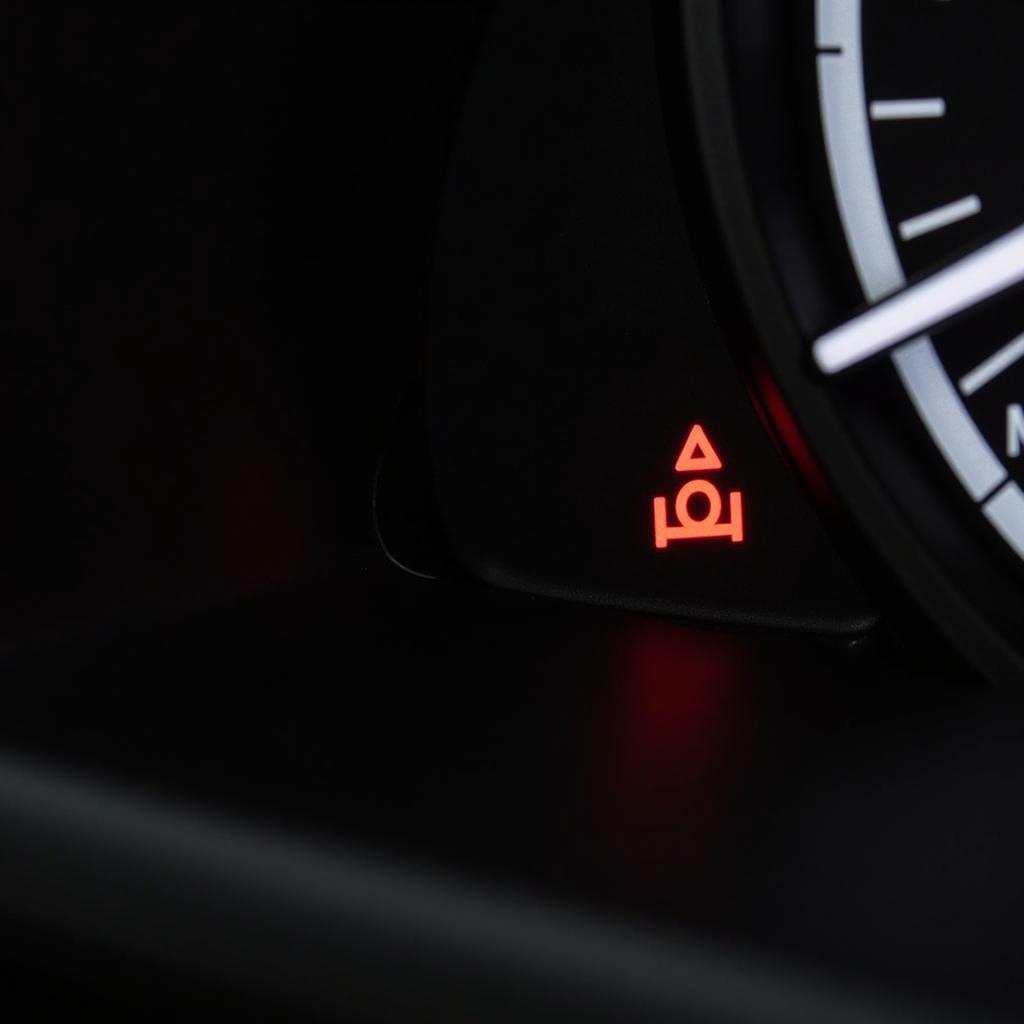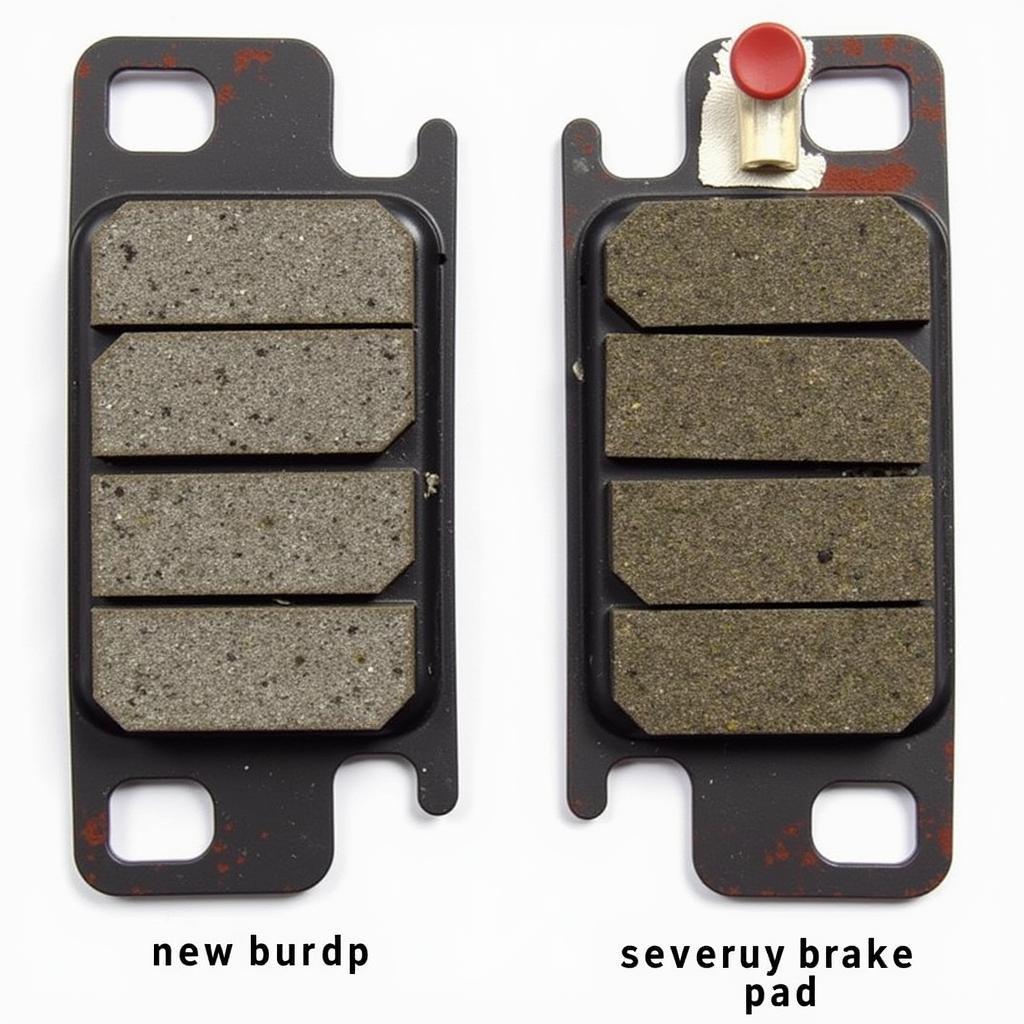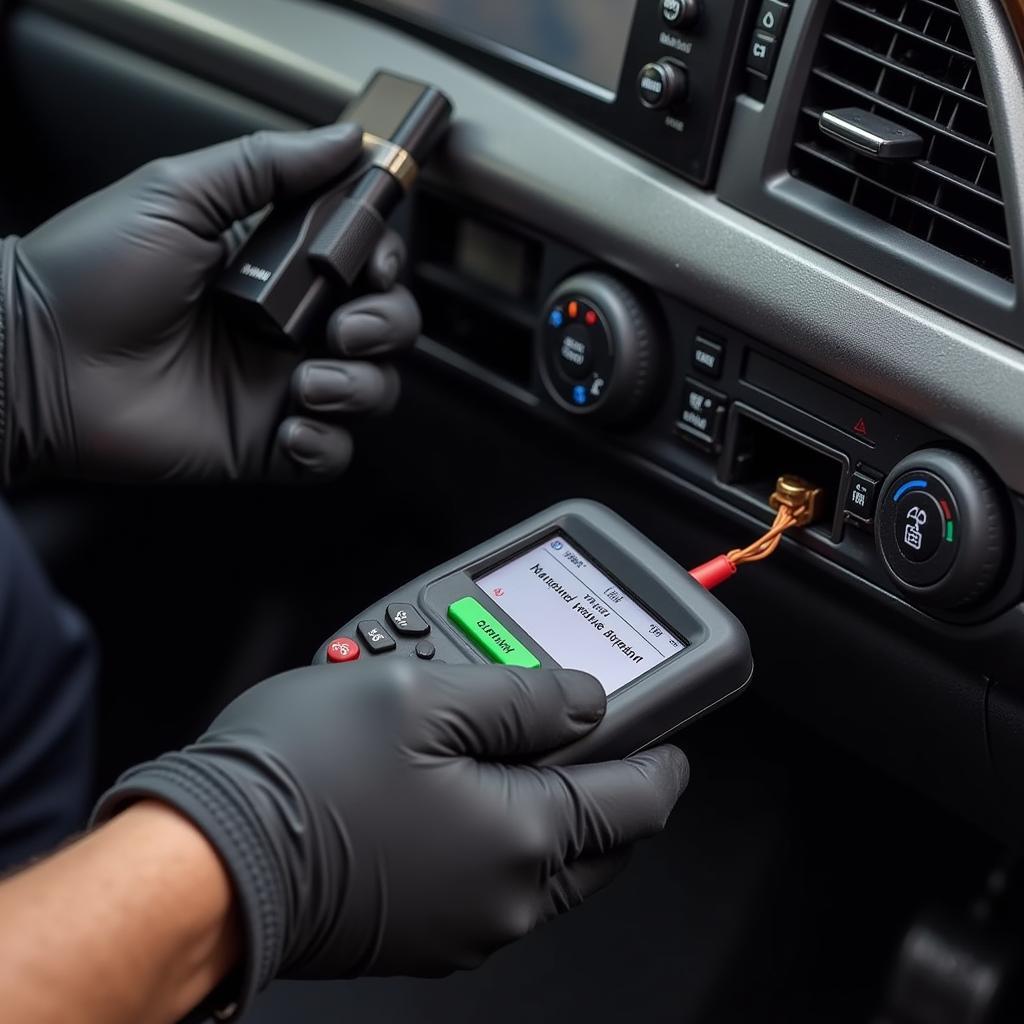The 2016 Toyota Highlander LE Plus is known for its reliability, but like any vehicle, it can experience issues. One common concern is the illumination of the brake warning light on the dashboard. This light can indicate a range of problems, from minor to serious, requiring immediate attention. This comprehensive guide explores the potential causes behind the 2016 Toyota Highlander LE Plus brake warning light and provides effective solutions for each scenario.
Understanding the Brake Warning Light
Before diving into the specifics, it’s crucial to understand what triggers the brake warning light. This light serves as a crucial safety feature, alerting drivers to potential issues within the braking system. In the 2016 Highlander LE Plus, the brake warning light can be activated due to:
- Low Brake Fluid Level: This is one of the most common reasons for the light to illuminate.
- Worn Brake Pads: As brake pads wear down, the brake fluid level drops, triggering the warning light.
- Faulty Brake Light Switch: A malfunctioning brake light switch can prevent the brake lights from engaging and trigger the warning light.
- ABS Issue: A problem with the Anti-lock Braking System (ABS) can also illuminate the brake warning light.
 2016 Toyota Highlander LE Plus Dashboard with Illuminated Brake Warning Light
2016 Toyota Highlander LE Plus Dashboard with Illuminated Brake Warning Light
Common Causes and Troubleshooting Tips
Let’s explore the most prevalent causes of the brake warning light in a 2016 Toyota Highlander LE Plus and how to effectively address them:
1. Low Brake Fluid Level
Brake fluid is the lifeblood of your Highlander’s braking system. When the fluid level drops too low, it can hinder the system’s ability to generate adequate pressure, compromising braking performance.
Troubleshooting:
- Check the brake fluid reservoir: Locate the reservoir under the hood, typically a translucent plastic container labeled “Brake Fluid.”
- Inspect the fluid level: The fluid level should be between the “Min” and “Max” markings.
- Add brake fluid: If the level is low, carefully add the correct type of brake fluid recommended by Toyota.
Important Note: If you find yourself adding brake fluid frequently, it’s essential to have your Highlander inspected by a qualified mechanic. This could indicate a leak in the system.
2. Worn Brake Pads
Brake pads are designed to wear down over time. When they become excessively thin, the caliper pistons have to extend further to apply the brakes, leading to a drop in brake fluid level and triggering the warning light.
Troubleshooting:
- Inspect the brake pads: Visually inspect the brake pads through the spaces between the wheel spokes.
- Look for wear indicators: Many brake pads have wear indicators, small metal tabs that will scrape against the rotor and create a squealing sound when the pads are worn.
- Replace brake pads: If the pads are thin or you hear squealing, it’s time for a replacement.
Pro Tip: “Always replace brake pads in pairs, even if only one side seems worn,” advises seasoned mechanic John Miller. “This ensures even braking performance and prevents premature wear on other components.”
 Comparison of New and Worn Brake Pads
Comparison of New and Worn Brake Pads
3. Faulty Brake Light Switch
The brake light switch is a small sensor located behind the brake pedal. It signals the brake lights to illuminate when the pedal is depressed. A faulty switch can disrupt this signal, leading to the brake warning light and non-functional brake lights.
Troubleshooting:
- Check the brake lights: Have someone press the brake pedal while you observe if the brake lights illuminate.
- Inspect the brake light switch: If the brake lights are not working, the switch may need to be inspected and potentially replaced.
4. ABS Issue
The Anti-lock Braking System (ABS) is a critical safety system that prevents wheel lockup during hard braking, enhancing vehicle control. An issue within the ABS system, such as a faulty wheel speed sensor, can trigger the brake warning light.
Troubleshooting:
- Check for additional warning lights: If the ABS system is at fault, you may notice additional warning lights on the dashboard, such as the ABS warning light.
- Retrieve diagnostic codes: Use an OBD-II scanner to retrieve diagnostic trouble codes, which can pinpoint the specific issue within the ABS system.
 Using an OBD-II Scanner to Diagnose a 2016 Toyota Highlander LE Plus
Using an OBD-II Scanner to Diagnose a 2016 Toyota Highlander LE Plus
Conclusion
The brake warning light in your 2016 Toyota Highlander LE Plus is a crucial safety indicator that should never be ignored. By understanding the potential causes and following the troubleshooting tips outlined in this guide, you can take the necessary steps to address the issue and ensure your Highlander’s braking system is functioning optimally. Remember, if you are unsure about any aspect of brake repair, it’s always safest to consult a qualified mechanic. Safe driving!
